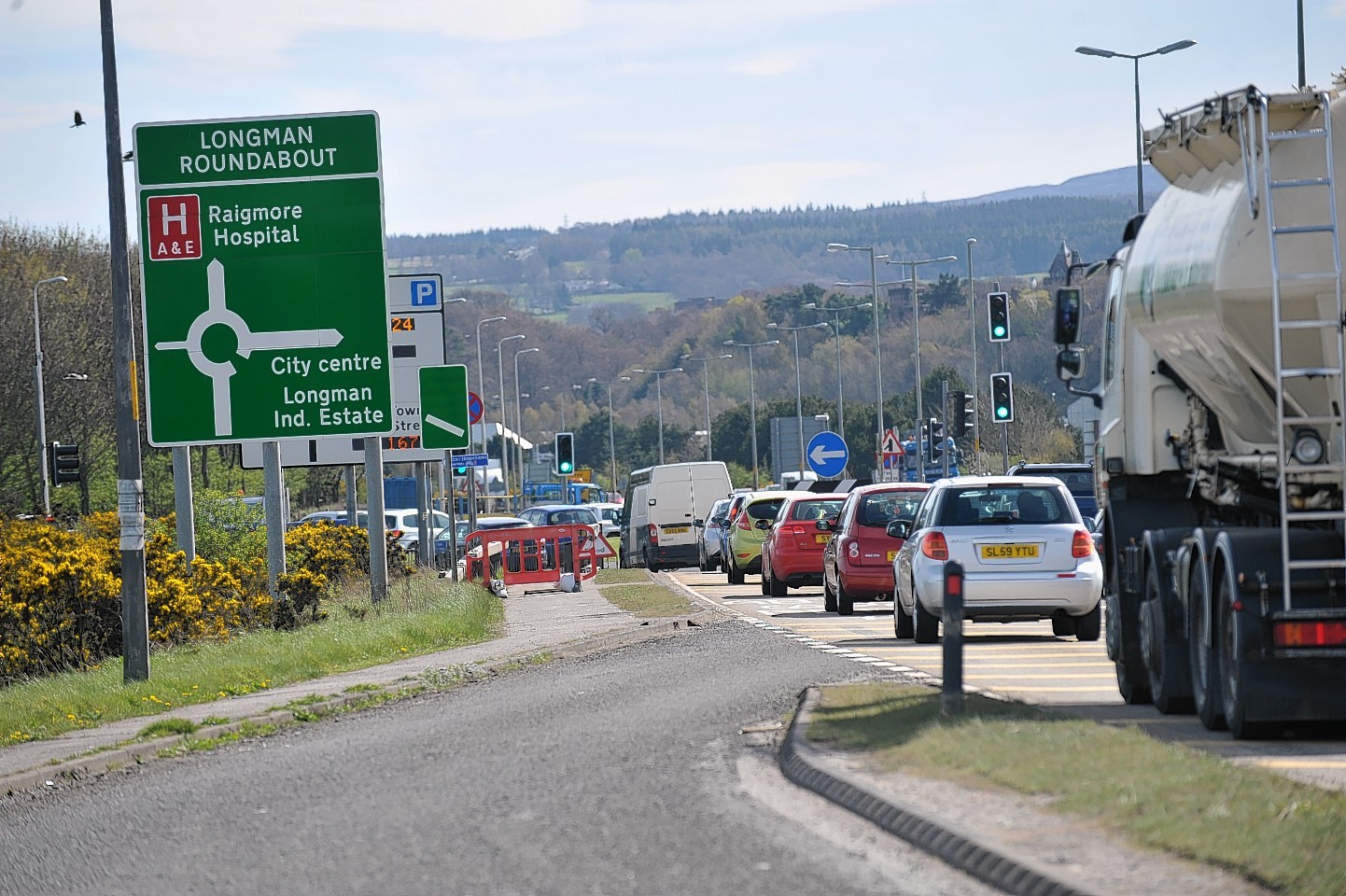Engineers are poised to start drawing up detailed plans for a multimillion-pound flyover at the worst traffic bottleneck in Inverness.
Transport chiefs have confirmed to the Press and Journal that design work for the long-awaited scheme at the Longman Roundabout will get under way this summer.
Consultants are being appointed by Transport Scotland to take forward a project that aims to finally end gridlock misery for motorists at the junction where the A9 meets the A82.
The flyover at the southern end of the Kessock Bridge is expected to be similar in design to the Raigmore Interchange, with options to be drawn up over the next 15-18 months.
The P&J understands that officials from Highland Council have already held talks with Inverness Caledonian Thistle FC about how the project will affect their stadium, which is next to the roundabout.
The Scottish Government has set aside £107million to progress the flyover, known as a “grade separation”, and the city’s new “East Link”, which will connect the A9 and A96 between Inshes and Smithton.
Both projects were included in the £315million Inverness City Region Deal, which was signed off in January by representatives of Highland Council, and the UK and Scottish governments.
Local politicians last night hailed the progress of the flyover scheme, which has long been viewed as a solution to rush hour congestion at the roundabout.
Highland Labour MSP David Stewart said: “I’m obviously delighted we’re getting a flyover, it’s really good news. We know it’s an extremely difficult choke point in our transport system.
“It’s not going to give immediate respite to motorists because of the length of time it will take, but it’s very positive that it’s coming.”
City SNP MP Drew Hendry said: “Understandably there is a lot of frustration about the bottleneck issues at the Longman, so it is welcome news that there is to be progress on this over the coming months.
“Tackling traffic issues in and around the city must be a priority, and I am glad to see the City Deal investment put to good use, to alleviate the situation – benefiting those who live and work here, as well as visitors to the city.”
The flyover would take vehicles crossing the Kessock Bridge up and over a roundabout that has become a notorious pinch-point, with official data showing traffic on the bridge has increased by as much as two-thirds in the past 20 years.
Traffic lights were installed at the roundabout but have proved controversial, with many motorists claiming they have exacerbated the problems.
Transport Scotland is also currently consulting on three options for the new East Link, which aims to cut congestion in the city by joining up with the West Link to enable drivers to bypass the city centre if they want to travel from the A82 Fort William road to the A96 Aberdeen road.
The agency is expected to make a final decision on its preferred route later this year.
A Transport Scotland spokesman said: “As part of the Inverness and Highlands City-Region Deal significant investment will be made in the trunk road network to deliver the grade separation of the A9/A82 Longman junction and the A9/A96 Inshes to Smithton Link Road to improve congestion and accessibility to Inverness.
“Following the completion of the A9/A96 Connections Study in 2016, the need for grade-separating the Longman roundabout was identified.
“Design work on the grade separation of the A9/A82 Longman Roundabout will start later this summer following the appointment of a design consultant. They will look at options for improving this well-known traffic bottleneck in Inverness.
“The Inshes to Smithton scheme is also being taken forward as part of the Inverness and Highland City-Region Deal and we are working closely with our colleagues in the Highland Council to ensure that the scheme fits with their development plan for the area east of the A9.
“Last year we presented the route options under consideration to the public for vital feedback and we continue to progress the assessment of these options as we work towards identifying a preferred route option later this year.”
